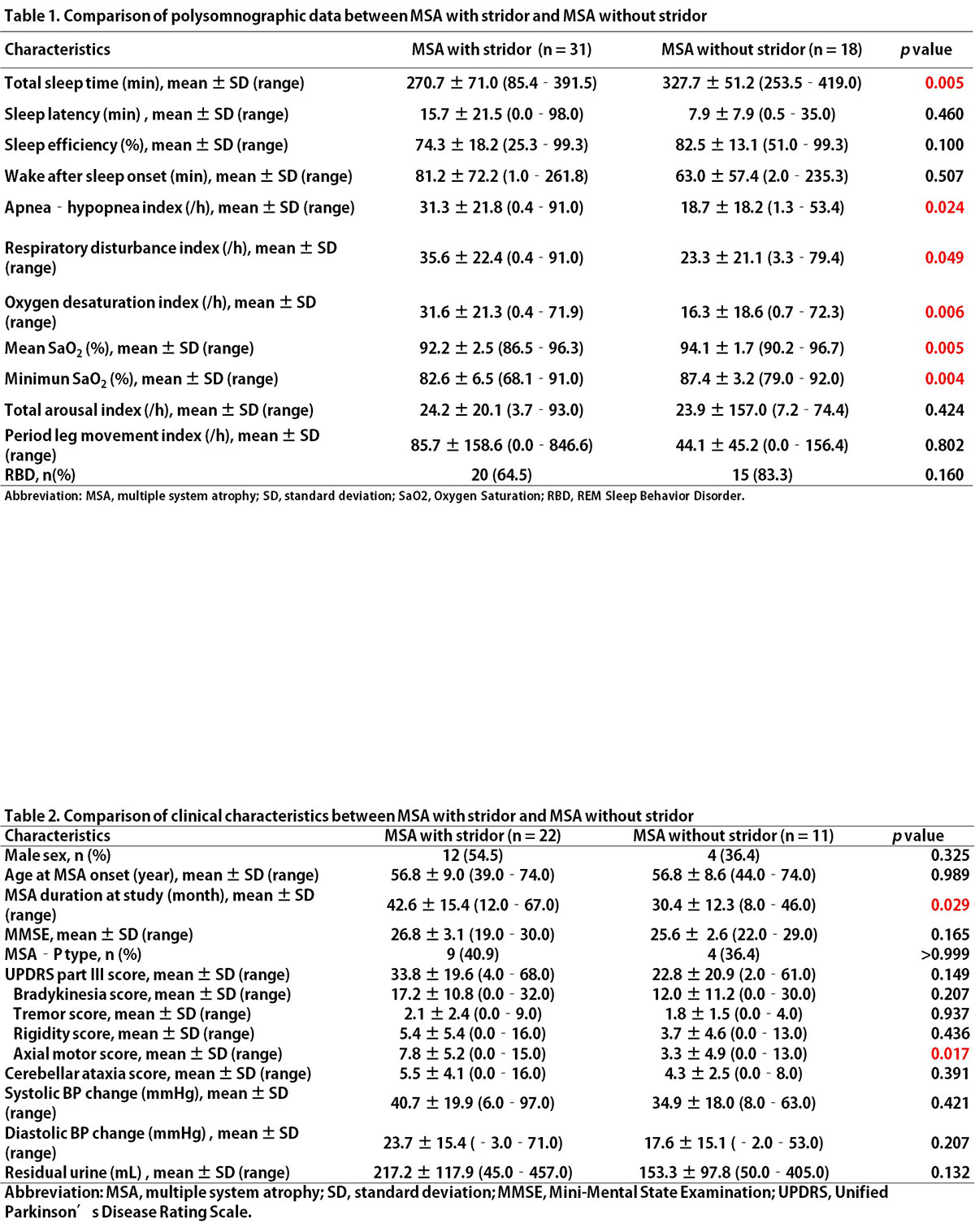Session Information
Date: Tuesday, September 24, 2019
Session Title: Parkinsonisms and Parkinson-Plus
Session Time: 1:45pm-3:15pm
Location: Agora 3 West, Level 3
Objective: We aim to study video-polysomnography (VPSG) and clinical features in patients with MSA. First, we investigate whether VPSG findings differ depending on the presence of nocturnal stridor in MSA. Second, we investigate the clinical features associated with the presence of nocturnal stridor in MSA.
Background: Nocturnal stridor has been known as a critical issue in patients with multiple system atrophy (MSA). However, little has been known about the VPSG findings and clinical features in MSA patients with nocturnal stridor and their clinical implications.
Method: We evaluated admitted 49 patients with MSA who underwent overnight VPSG for evaluation of their respiratory abnormalities during sleep, such as snoring and stridor between January 2007 and May 2016. Nocturnal stridor was defined as present when confirmed by an overnight VPSG. The clinical data, including VPSG, and clinical features, were compared between the MSA patients with stridor and those without.
Results: Thirty-one MSA patients (63.3%) were assessed as having the stridor. The MSA with stridor showed significantly higher apnea-hypopnea index, respiratory disturbance index, and oxygen desaturation index compared with MSA without stridor (P = 0.024, P = 0.049, P = 0.006, respectively). The axial motor feature of MSA was more severe in the MSA with stridor than the MSA without stridor (P = 0.017). The disease duration of MSA was longer in MSA stridor than MSA without stridor (P = 0.029). However, there was no significant difference of sex, age at disease onset, subtypes of MSA, parkinsonian feature, cerebellar ataxia, residual urine volume, systolic and diastolic blood pressure change between the groups. In logistic regression analysis, longer disease duration (P = 0.04) and more severe axial motor feature (P = 0.036) were independently associated with the presence of nocturnal stridor in MSA.
Conclusion: MSA with nocturnal stridor is associated with more severe hypoxemia during sleep, severe axial motor feature, and longer disease duration.
To cite this abstract in AMA style:
H. Ryu, J. Paek, S. You, M. Kim, Y. Kim, J. Kim, K. Kim, S. Lee, S. Chung. Nocturnal stridor in multiple system atrophy: video-polysomnography and clinical features [abstract]. Mov Disord. 2019; 34 (suppl 2). https://www.mdsabstracts.org/abstract/nocturnal-stridor-in-multiple-system-atrophy-video-polysomnography-and-clinical-features/. Accessed December 29, 2025.« Back to 2019 International Congress
MDS Abstracts - https://www.mdsabstracts.org/abstract/nocturnal-stridor-in-multiple-system-atrophy-video-polysomnography-and-clinical-features/

